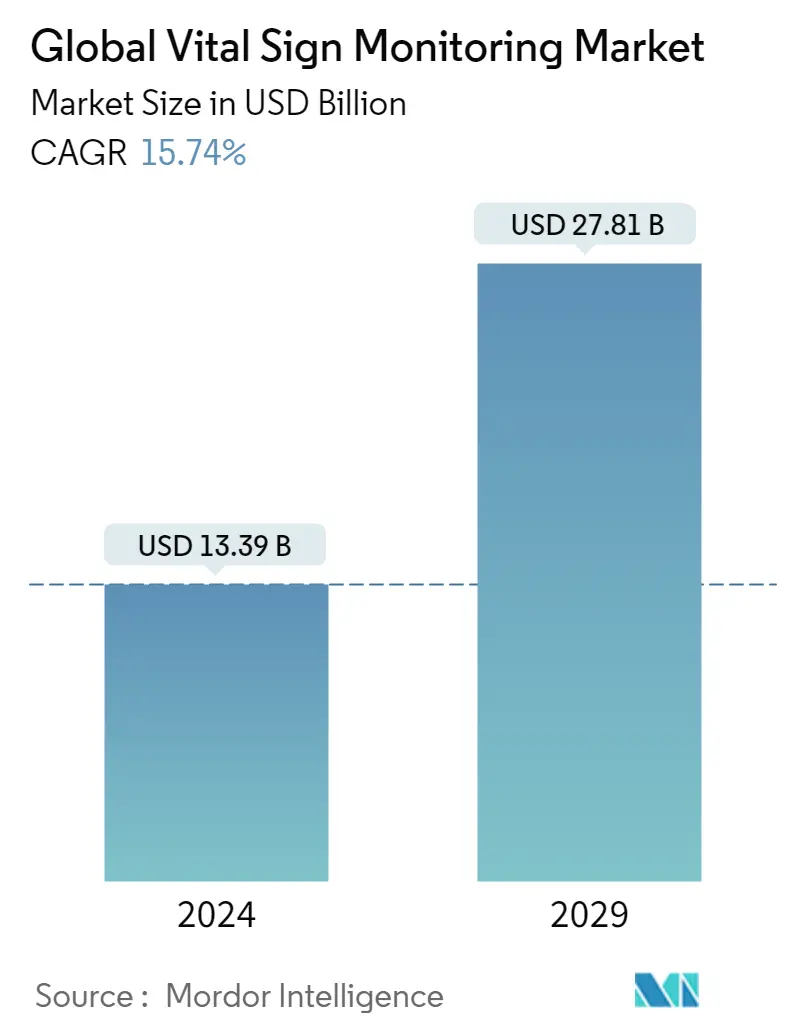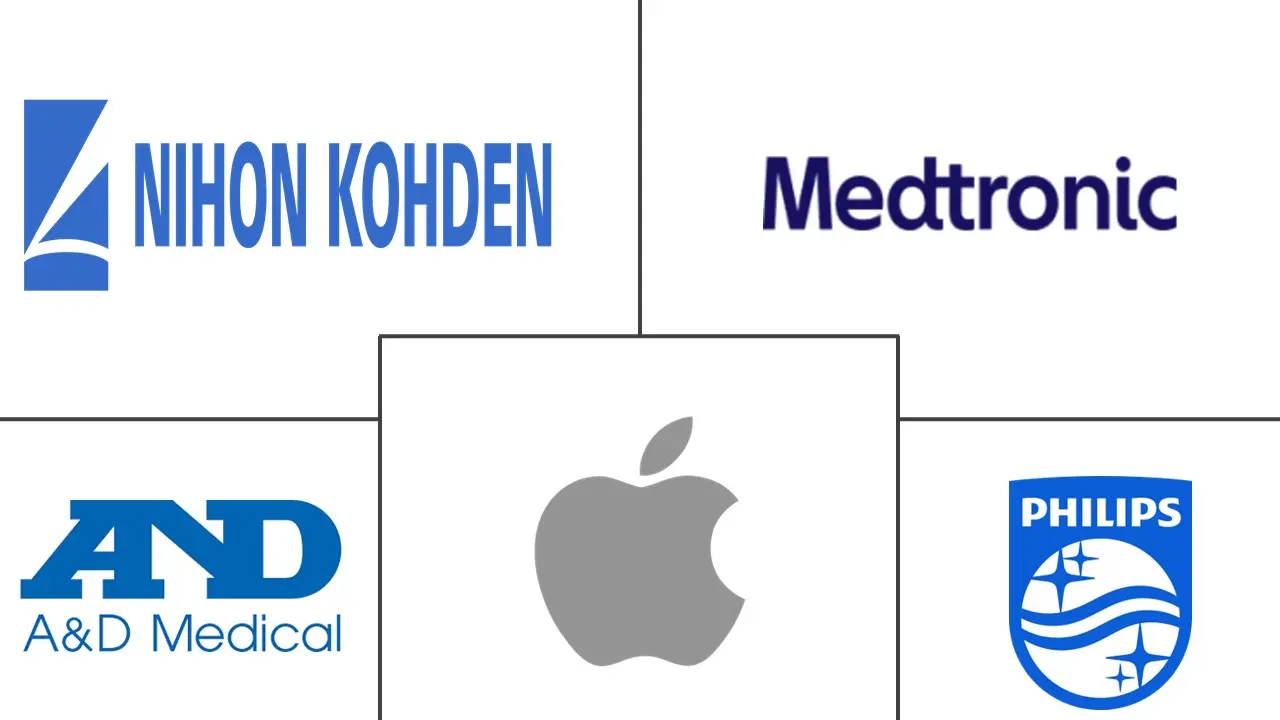Market Size of Global Vital Sign Monitoring Industry

| Study Period | 2019 - 2029 |
| Market Size (2024) | USD 13.39 Billion |
| Market Size (2029) | USD 27.81 Billion |
| CAGR (2024 - 2029) | 15.74 % |
| Fastest Growing Market | Asia Pacific |
| Largest Market | North America |
Major Players
*Disclaimer: Major Players sorted in no particular order |
Need a report that reflects how COVID-19 has impacted this market and its growth?
Vital Signs Monitoring Market Analysis
The Global Vital Sign Monitoring Market size is estimated at USD 13.39 billion in 2024, and is expected to reach USD 27.81 billion by 2029, growing at a CAGR of 15.74% during the forecast period (2024-2029).
Covid-19 has significantly impacted the market growth due to the rise in the adoption of vital signs monitoring devices as care for conditions other than COVID-19 was severely impacted during the pandemic, and also, vital sign monitoring of COVID-19 increased owing to the severity of the disease which led to the development of many technologies which are expected to have a significant impact on the studied market. For instance, according to a research study published in November 2021, titled "Cost-Effective Vital Signs Monitoring System for COVID-19 Patients in Smart Hospital", owing to the high influx of COVID-19 patients, providers needed to deploy monitoring devices and develop new devices and the researchers of the study developed a simple, reliable, and cost-effective microcontroller-based wireless vital signs monitoring system with high mobility and low power consumption that can measure the BT, HR, SpO2, RR, and ECG of patients for large hospitals, and it was found to be accurate and safe. Hence, developments like these are expected to have a significant impact on the market over the forecast period.
The growth of the geriatric population and the rising prevalence and incidence of chronic diseases increased the applications of devices monitoring vital signs in emergency medicine and ambulatory care. This led to increasing demand for advanced algorithm-based and home care monitoring equipment. For instance, according to the World Health Organization statistics updated in October 2021, the proportion of the world's population aged 60 is growing and the share of the population aged 60 years and over will increase from 1 billion in 2020 to 1.4 billion by 2030. Therefore, the rise in the geriatric population is a most significant contributor to diseases, and there is an increased need for the observation of vital signs in the elderly population as there is a greater tendency for reduced homeostasis, which makes it difficult for the body to carry out optimal physiological functions, driving the market growth.
In addition, rising product approvals for vital sign monitoring are also expected to drive market growth. For instance, in March 2022, the Food and Drug Administration granted 510(k) clearance to Biobeat's wearable remote patient monitoring device to monitor respiratory rate, body temperature, cuffless blood pressure, blood oxygen saturation, and pulse rate.
As vital signs provide a quantification of physiological functions used for monitoring acute and chronic diseases, vital sign monitoring essentially serves as a communication tool about patient status, propelling market growth. The rising prevalence of cardiovascular diseases such as hypertension, atrial fibrillation, and stroke, among others, are further contributing to the market growth. For instance, according to the August 2021 update of the World Health Organization, about 1.28 billion people of age 30-79 years have hypertension across the world, with two-thirds of this population living in low- and middle-income countries. Further, as per the same source, about 46% of adults are unaware of their hypertension situation. Hence, in such instances, cardiovascular vital sign monitoring becomes an indispensable tool for disease management, fuelling the market for these devices. Therefore, due to the factors mentioned above, the vital sign monitoring market is expected to grow over the forecast period of the study. However, factors such as the unresponsiveness of some monitoring devices, pricing pressures, and the rise in counterfeit products are expected to hinder the market growth.
